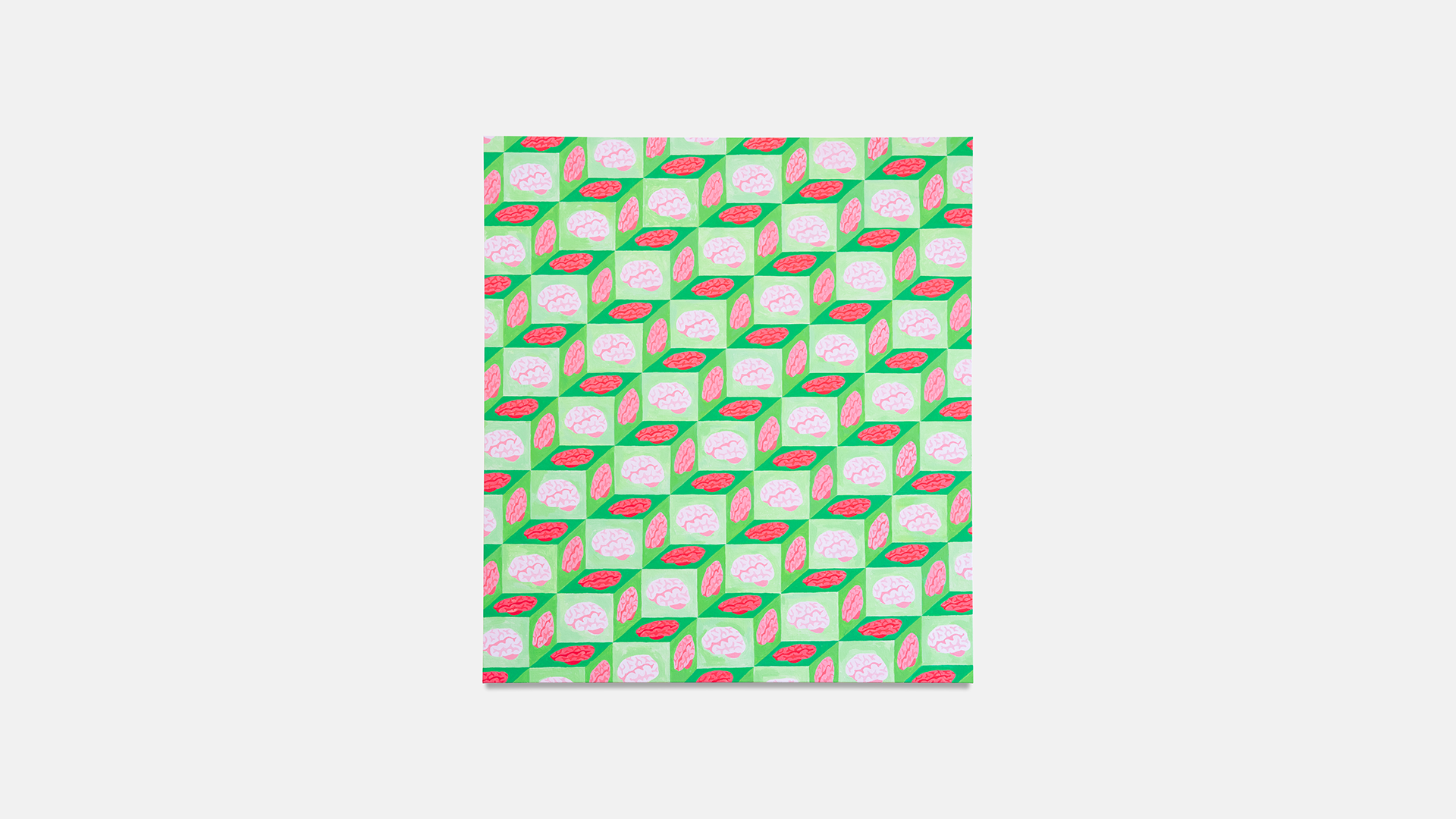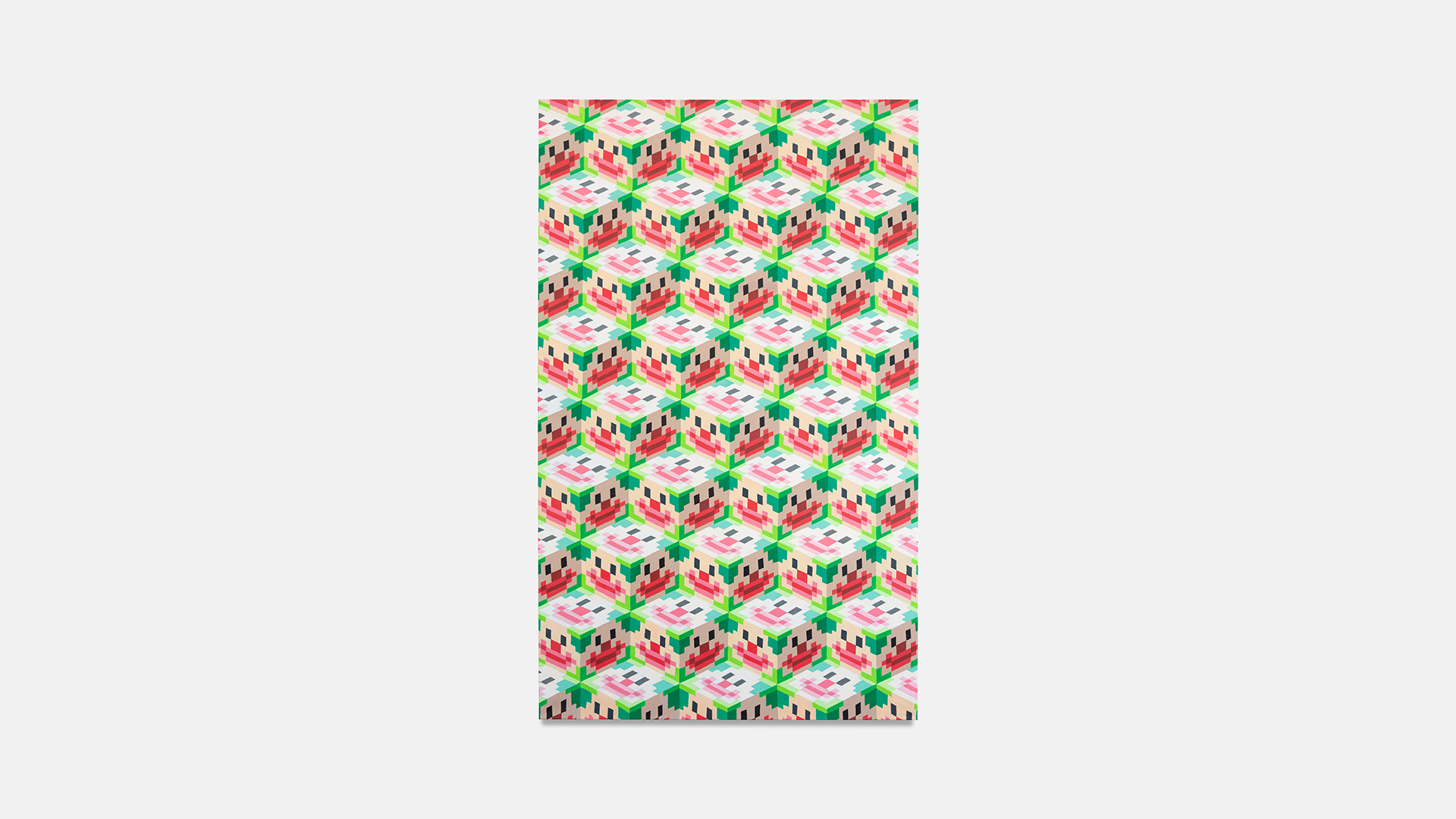Paraskevi Frasiola is a Greek artist driven by a deep fascination with repetition, pattern, and the meditative qualities of the creative process. By embracing these qualities, Frasiola aims to offer the viewer a moment of respite and reflection, encouraging them to explore the intersections of the personal and the universal within contemporary art.
Frasiola works across a variety of media, including painting, drawing, animation, and other forms. Intrigued by the ways digital tools and technologies can shape shared experiences, Frasiola often incorporates elements like emojis, 8-bit images, and memes into their work. These common and impersonal visual languages become a bridge between the personal and the universal, inviting the viewer to engage with the artwork on a deeper, more relatable level. Frasiola holds an MA in Painting from the School of Visual and Applied Arts at the Aristotle University of Thessaloniki, Greece, and an MFA from the Frank Mohr Institute, Groningen, Netherlands. Statement
We often find ourselves as a pawn in the interplay between the internal and external worlds. There is a certain unease that comes with being alone with one's thoughts, as the mind can often wander to dark and unsettling places. In such situations holding on too patterns can do both, provide stability but also drive destructive circular thinking.
My artistic practice is a reflection of this duality, where I explore the visual metaphor of creating patterns as a means of coping with the complexities of the human experience. I am driven by a deep fascination with repetition, pattern, and the meditative qualities of the creative process.
Intrigued by the ways in which digital tools and technologies can shape and personalise shared experiences, I incorporate elements like emojis, 8-bit images, and memes into my work. These seemingly clumsy forms of communication become a way of expressing unsettling thoughts disguised with innocent symbols.
Embracing these common and impersonal visual languages, a bridge between the personal and the universal is created, inviting the viewer to engage with the work on a deeper, more relatable level with comforting imagery to hold on to when the mind gets lost in unsettling thoughts.
In recent work, I have been experimenting with the use of three emojis as a starting point to explore tonality, layering, and abstraction. The repetitive use of these symbols establish order and predictability in stark contrast to the concepts the emojis and their combination symbolise.
Identifying patterns in the stimuli our external and internal worlds produce is our brain’s approach to categorise information and minimise it for us in order to be able to process and act on it. This includes periodic structures like daily routines or ordering objects in space, but also intuition and emotional reflexes. These patterns reduce noise and surprises and offer security through predictability. Structures also allow us to sense deviations from the regular and respond to them consistently. Patterns can also be found in cognitive processes such as circular reasoning and pondering providing stability and confirmation through feedback loops. The occasional all-destructive “what if all this is a facade?”, disrupting the calm and structured surface, exemplifies the fundamental fragility of the security our pattern thinking provides. And these destabilising tendencies can develop into established thinking patterns, too.
Similar to the effect of the patterns themselves, the clear, in a sense primary, colour palette of the emojis and the semantic satiation achieved by their repetitive use, temporarily softens the otherwise dramatic concepts behind the emojis and lowers the threshold for the viewer to safely access and engage with the multi-layered works on a deeper level.
Embracing the meditative qualities of the execution of an artwork is a fundamental part of my practice. Through a visibly slow, methodical, and repetitive approach to drawing and painting, contrasting the fast sketching process using digital tools, I establish a sense of stability and calm.This foundation of repetition and meditation serves as a flexible sounding board, allowing for room to reflect on trauma, doubts, and uncertainties for myself and the viewer.
Ultimately, my artistic practice is a reflection of the human condition, a testament to the power of the mind to both create and destroy, to conceal and reveal. My mission is to develop a universal visual language enabling me and a broader audience to share these difficult, often unsettling, themes with others.
Opens Thursday 9th May at 6:00pm



